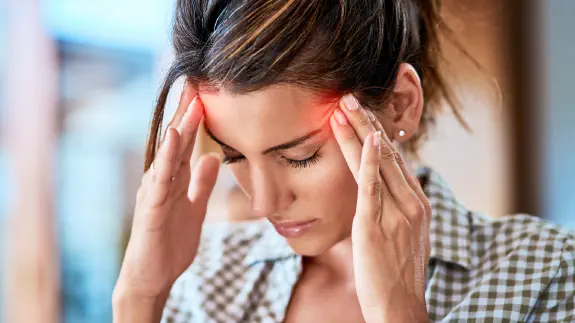Sex and Gender-based Analysis of this topic
Definition
There are a number of different types of headaches. The International Headache Society (IHS) has classified the different types, which include migraines, tension-type headaches (TTH), cluster headaches, chronic daily headaches (CDH), chronic tension-type headache (CTTH), daily persistent headache, and hemicrania continua.
Migraines are usually defined as with aura (formerly called classic migraine) or without aura (formerly called common migraine) [1]. Migraines with aura usually involve neurological symptoms or sensory disturbances preceding the actual headache, most commonly spots or lines in the visual field, tingling skin, dizziness, or blurred vision, and usually last 4 to 72 hours. Migraines without aura, the more common migraine type, also last 4 to 72 hours, include throbbing or pounding pain that is usually severe, and are often accompanied by nausea and/or vomiting [2]. Migraines are three times as common in women as men [3].
Sex Issues
Often individuals with migraine have a family history of migraines, which suggests underlying genetic factors [4]. Although it is not clear for all migraine types, for one rare type of migraine called hemiplegic migraine, two gene mutations have been identified which cause changes in the ion channel protein, affecting electrical properties of some nerve cells in the brain. Researchers believe that multiple genes may cause the different types of migraines.
The role of hormones, specifically estrogen, has been examined in regards to women’s higher incidence of migraine. Hormonal fluctuations may occur during menstruation, pregnancy, breastfeeding, and the use of hormonal contraceptives. One study found that migraines peaked immediately before and following menstruation [5].
The use of oral contraceptives (OCs) may exacerbate migraine incidence due to fluctuations in estrogen levels; women on OCs may be at an increased risk for ischaemic stroke and possible migraines, but the evidence is unclear [3, 6]. Women who experience migraine with aura may be at a three- to four-fold increase for ischaemic stroke compared to women who do not experience migraines, and the use of oral contraceptives is not advised in these women. Women who experience migraines and lower levels of estrogen may be at a lower risk for some types of breast cancer since women with higher levels of estrogen have a higher incidence of breast cancer [7].
One international study found that a family history of migraine, regardless of personal history of migraine, was associated with increased risks for both ischaemic and haemorrhagic strokes [8]. Personal history of migraine was associated with increased risk for ischaemic stroke, but not haemorrhagic strokes. The same study found that up to 40% of strokes in women with migraines developed directly from a migraine attack.
Gender Issues
There are a number of potential migraine triggers, such as positive or negative emotional stress, frustration, anger, fatigue, and sleep disturbances [9]. Certain food triggers, such as red wine, chocolate, and cheese, to name a few, have also been identified. Women under a lot of stress and/or without adequate social support, may be at a greater risk for experiencing migraines [10].
Diversity
One study compared migraines in older (60 to 70yrs) and younger (40 to 60yrs) individuals and found that migraines were slightly more common in the younger group [11]. However, this may be due to migraines being unrecognized in older populations.
Critique
Migraine is often misdiagnosed and/or under-diagnosed and many migraine researchers have long since advocated for better screening and diagnosis techniques, as outlined by the International Headache Society [12].
